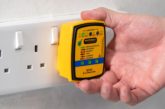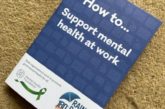
Bad weather can be a nightmare for those working in the trades, causing delays which can increase both the cost and the timeframe for the completion of a project, whilst also making working on site potentially dangerous if appropriate precautions aren’t taken.
Recent research by IronmongeryDirect found that the average tradesperson loses £1,300 per year due to bad weather and misses an average of a week of work annually.
Amongst the trades that are impacted by bad weather the most are plumbers, who lose £1,723 per year, electricians, who lose £1,570, and builders, who miss out on £1,548.
Whilst it can be tempting to avoid delays and losing money by working through bad weather, it’s important to ensure that the safety of yourself and others is prioritised.
For this reason, IronmongeryDirect has provided some expert tips to help you stay safe when working in bad conditions.
Monitor the weather
You should ensure that you’re constantly keeping an eye on the weather to determine what kind of work you can do safely.
For example, if there’s a thunderstorm you should prioritise jobs that can be done indoors to avoid getting caught in the rain. Similarly, in heavy rain it is important to avoid work where slippery surfaces can pose a health risk.
Working in an exposed position without any kind of protection or shelter can be a serious hazard, so it’s important to ensure that you’re monitoring the conditions and adjusting your work accordingly.
Avoid working at height
Most types of bad weather can make working at height particularly dangerous, so it’s important that you avoid these types of jobs in bad conditions.
Whether it’s high wind making it more unstable to work on exposed positions at height, or heavy rain creating slippery surfaces that are more dangerous to stand or walk on, jobs lower to the ground are safer during bad weather.
Be aware of your surroundings
Building sites are hazardous at the best of times, and potential risks increase in the bad weather. When you’re working and exposed to the elements, ensure that you’re aware of potential hazards that could be around you.
Check to see if scaffolding or equipment is secure and not posing a danger to you or anyone else, keep an eye out to see if any tools or materials could pose a tripping hazard and remove them if so. You should also try to be aware of other people or activities going on around you so you can safely avoid them.
Secure loose materials and equipment
In high winds and heavy rain, loose materials and equipment can pose a serious risk if they aren’t properly secured.
In bad weather, unsecured items can move around and potentially cause disruption to a work site, which could result in either additional time spent clearing up and replacing the materials, or in the worst case, they could pose a danger to yourself or others on site.
Don’t hesitate to stop
Weather can progressively get worse as the day goes on, and what may have started out as workable conditions may deteriorate to a point where it is no longer safe to continue working.
If this happens, then it’s important to call a halt to working outdoors until the weather improves. Whilst a delay to work is never desirable, it’s always better than having to deal with a disastrous situation that occurs from choosing to continue working in bad weather.
www.ironmongerydirect.co.uk/blog/top-tips-for-staying-safe-whilst-working-in-bad-weather













